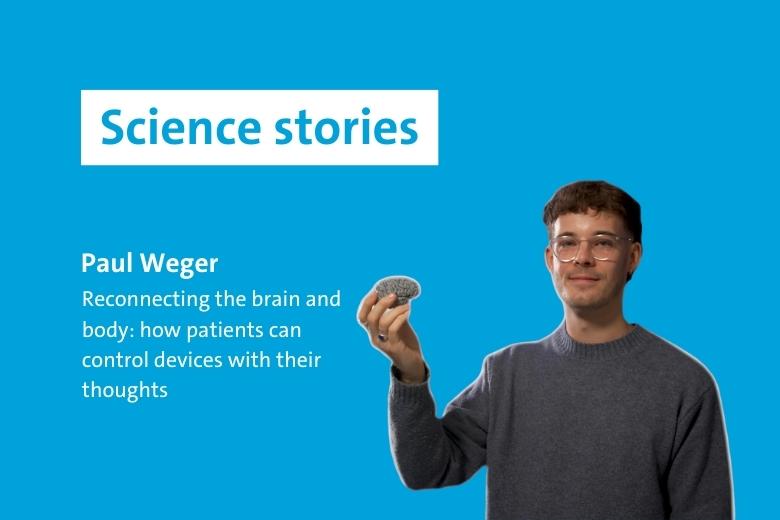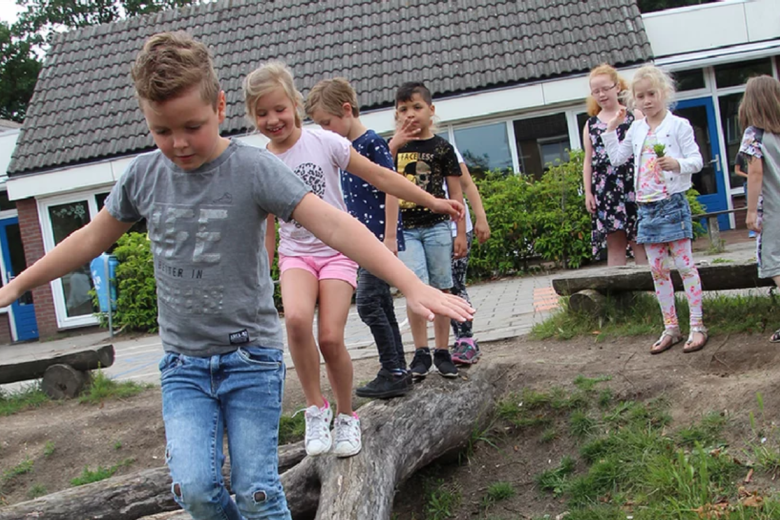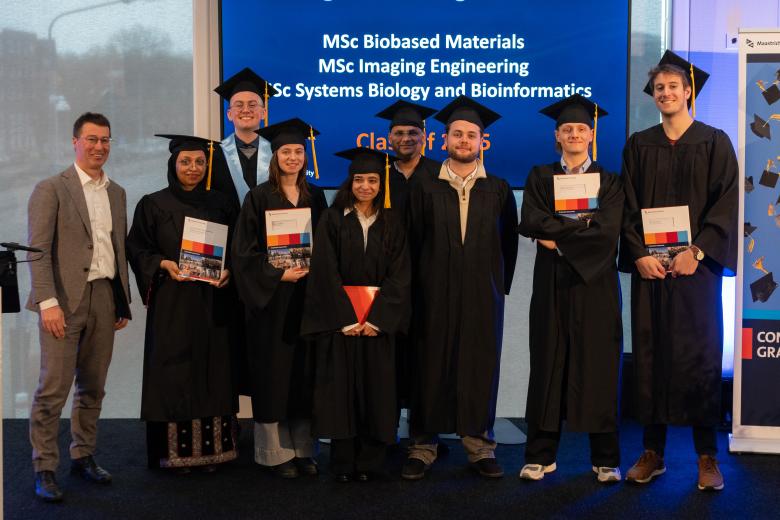Searching for a new treatment for Parkinson’s disease
Parkinson's disease has been in the news more and more often lately, and that has everything to do with the rapidly growing number of patients. In the Netherlands, Parkinson's disease is the fastest-growing brain disease. With around 70,000 patients, it now ranks second after Alzheimer’s disease. And every year, another 1,500 patients are diagnosed. Treatment options remain limited, which gives Meagan Hannemann extra motivation to conduct research into potential new therapies.
Meagan Hannemann started her PhD research in October 2024, aiming to find a new treatment method for Parkinson's disease. Meagan: “I have always been interested in neurodegenerative diseases. That's why, after my bachelor's degree in psychology, I pursued a master's degree in neuropsychology, a programme that focuses on these types of brain diseases. During my internship at the Alzheimer Centre Limburg, I contributed to research about early-onset dementia. When this PhD opportunity to conduct research about Parkinson's disease came along, it immediately caught my attention. I was particularly attracted to the combination of research and patient contact. What appealed to me most was the combination of research with direct patient contact.”
Parkinson's disease
Parkinson's disease is the second most common neurodegenerative disorder after Alzheimer's disease. Around 70,000 people in the Netherlands already have the disease, and that number is growing every year. Patients experience symptoms such as tremors, but also more hidden symptoms such as anxiety, depression, and sleep problems. The disease can sometimes be difficult to recognise. “That's because,” says Meagan, “the classic symptoms, especially in the early stages, are not yet always visible. Moreover, the disease does not manifest itself in the same way in everyone: Parkinson's disease has different subtypes”.
Meagan: “A lot of research is being done on Parkinson's disease from different angles. My focus is on exploring a new treatment. There is a strong need for this, as the treatments we currently have don’t work equally well for everyone. In addition to supportive treatments, for example by physiotherapists, medication is a well-known approach. This replenishes the shortage of dopamine in the patient’s brain. While this treatment often works initially, its effectiveness tends to decrease over time, requiring higher doses. Another well-known treatment, which provides a more long-lasting effect, is Deep Brain Stimulation (DBS). This treatment is safe and often effective in a carefully selected group of patients, but it is also an invasive brain surgery that carries certain risks”.
There is a strong need for new treatments, as the treatments we currently have don’t work equally well for everyone.
Longitudinal study Track PD
In preparation for her PhD research, Meagan is currently involved in two major research projects. Meagan: “I will integrate the data from these ongoing research projects into my PhD research. The first project is called Track-PD (Track Parkinson's Disease); a longitudinal study in which participants are examined several times over a longer period of time to measure changes over time. This study started four years ago. In a group of about 100 people, cognitive tests and questionnaires were conducted to gain insight into their daily functioning and to examine symptoms such as anxiety and depression. This group of people is seen three times over a period of four years (at the beginning, halfway, and at the end), with the same tests performed at each measurement point. I am now testing the last participants of the fourth year. After completing the tests, the patients spend about an hour in the MRI scanner at Scannexus. We use a leading imaging method with a 7T scanner, which t has a high magnetic field strength. This allows us to study the brain in great detail”.
Two small brain regions
Meagan: “There are two specific regions we have already studied closely, both of which are known to be related to Parkinson's disease. The first is the substantia nigra (“black substance”), where many motor functions are stored and which, when damaged, causes typical Parkinson's symptoms such as slowness, stiffness, tremors and balance problems. The second is the locus coeruleus (“blue spot s”), which plays a role in symptoms such as depression and anxiety, as well as cognitive complaints and sleep problems. We are examining whether the scans reveal differences in the brains of healthy individuals compared to those with Parkinson's disease, and how the brain changes over the years. We are also looking for possible connections between the scan results and the cognitive test scores. The big question will be whether we can identify a biomarker from all this data”.
The second study: Neurofeedback Research
The second study is the neurofeedback study. Meagan: “In this study, participants undergo a total of four MRI scans over a period of one month. When they are in the scanner, they are instructed to movements for example walking or swimming. This activates an area of the brain (putamen) that is known for its role in Parkinson's disease. As they imagine movements, they see a kind of thermometer bar on a screen that indicates their brain activity. If they are successful in thinking about movements, the thermometer bar rises; otherwise, it remains low. Between the weekly MRI sessions, participants are given homework assignments to practise at home daily what they practiced in the MRI. In this way, we try to train the brain area in between measurement moments. Finally, after four weeks, we administer the questionnaires again to see if the symptoms have decreased”.
I hope that we will discover something innovative, something important, that will really make a difference in the treatment of patients and offer them a better quality of life.
Research question
Meagan: "My research question has not yet been specifically defined. During the first year of my PhD, I am fully focused on the aforementioned studies. In the coming year, I will further specify my research question, using data from the Track PD and neurofeedback study, among other sources, to formulate my own research question. I am very excited to start my own research and look forward to seewhat the future holds and whicht results the research will yield. We may be able to develop a treatment based on the neurofeedback research. After all, we are trying to train a specific brain area,which will hopefully improve symptom regulation. If this proves to be effective, it could become a treatment option”.
Impact
Meagan: "It would be great if my research could contribute to better treatment options in the future. Of course, I hope that we will discover something innovative, something important, that will really make a difference in the treatment of patients and results in a better quality of life. I find the patient contact in this type of research very special. It brings me very close to the ‘why’ of this research. I meet the patients and see how the disease manifests itself. In that sense, I can already feel the impact of the research. I hope that I can maintain that combination even after my PhD”.
Text: Eline Dekker
Photo: Joey Roberts
Also read
-
Reconnecting the brain and body: how to control devices with your thoughts
Can you control a robotic arm with your thoughts? Paul Weger (MHeNs) studies this to give back independence to patients with neurological conditions.
-
Green school playgrounds boost concentration and wellbeing
Children at schools with green playgrounds are better able to concentrate and display more social behaviour. This is the conclusion of a follow-up study within the long-running project The Healthy Primary School of the Future .
-
Ron Heeren appointed fellow of the Netherlands Academy of Engineering
Professor Ron Heeren, distinguished university professor at Maastricht University (UM) and director of the Maastricht MultiModal Molecular Imaging Institute (M4i), was appointed as a fellow of the Netherlands Academy of Engineering (NAE) on Thursday 11 December.